5 min read
Too Good To Go Improves the ROI of Their Campaigns With Personalization at Scale
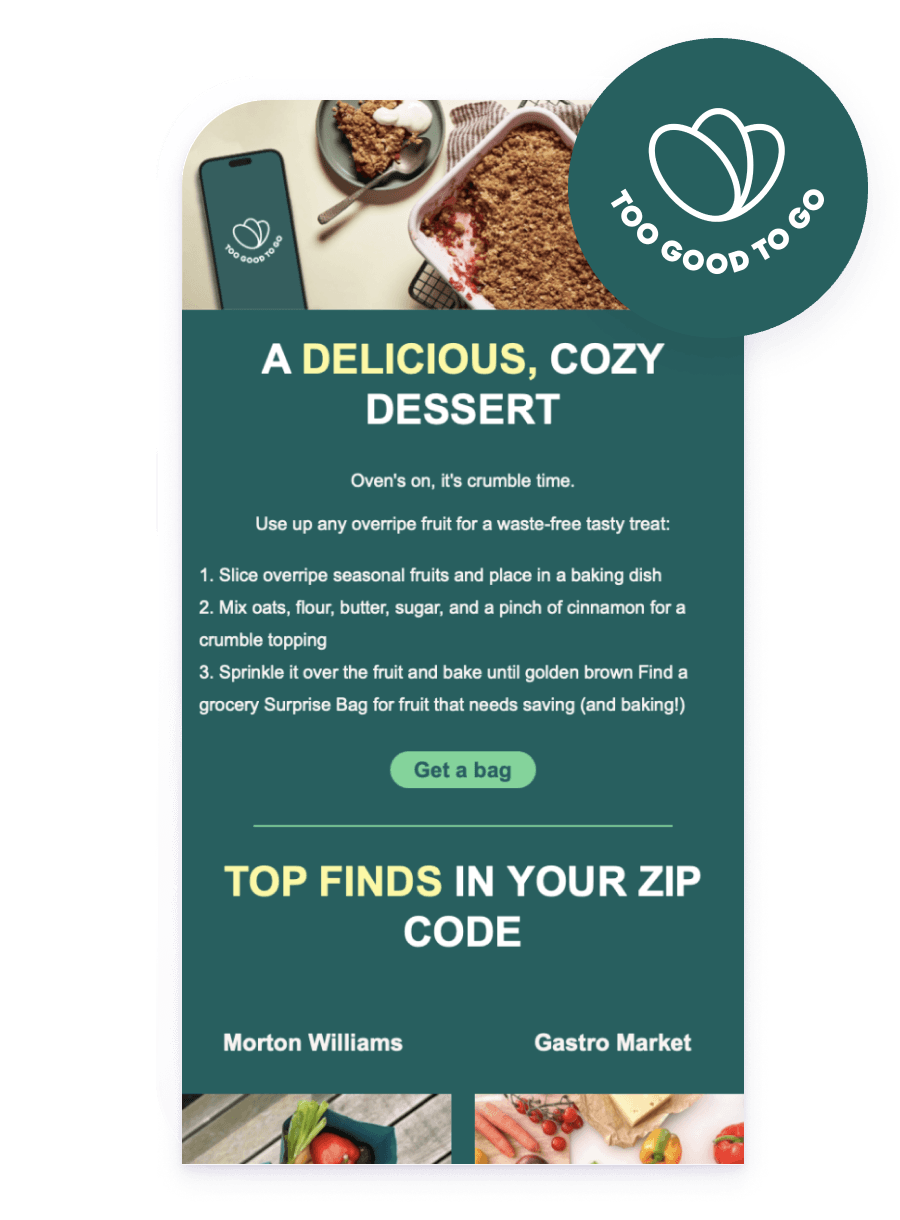
Despite a high number of unique individuals using the app, Too Good To Go needed ways to better transform engagement into purchases. Their main product, Surprise Bags, were often in limited supply at each participating retailer and only relevant to nearby users, which required a strategic approach to messaging. They needed the ability to make relevant 1:1 recommendations to their users, at scale.
By leveraging Braze, Too Good To Go was able to better match supply with demand and create relevant lifecycle messages that were dynamically personalized as supply and customer behavior evolved.
With the new strategy, users were better able to find and get what they wanted, leading to an increase in purchases. Additionally, thanks to higher conversion rates, Too Good to Go was able to maximize the effectiveness of their efforts and tech costs. Also, with help from their data engineering team, they were able to sync behavioral segments to Braze as user attributes in a couple of weeks—once established, the sync was able to run by itself.
INDUSTRY
PRODUCTS USED
BY THE METRICS
135%
Increase in purchases attributed to CRM
2X
Increase in conversion rate for messages
Since its launch in 2016, Too Good To Go has helped to save over 300 million meals from going to waste. To achieve its mission of reducing food waste on a global scale, the brand provides a unique platform where users can purchase 'Surprise Bags' of unsold surplus food from restaurants and grocery stores at reduced prices, that would have otherwise gone to waste.
For the Too Good To Go team, maintaining strong customer engagement at a low cost is essential for advancing their mission. By using Braze, they are able to drive more purchases (aka directly reduce food waste), prevent customer churn, and maximize ROI.
Tailored Notifications for Maximum Relevance and Engagement
For Too Good to Go, driving a high number of users to the app doesn’t always translate to an optimal customer experience. Surprise Bags are often limited—for example, a restaurant sometimes only puts out five or ten—and can’t be recommended to just anyone, as users don’t want to pick up a Bag that’s an hour drive away. To address this issue, Too Good to Go needed a thoughtful messaging strategy that was deeply connected to (and based on) evolving data.
After surveying their audience, they found that the number one reason why users hadn’t made a purchase yet or were not buying more was because they couldn’t find what they were looking for. Essentially, Too Good To Go was successful at driving users to the app, but the messages weren’t always connecting to what was actually available in the app or relevant to the user at that point in time. This disappointing experience leads to messaging fatigue and frustration, which ultimately leads to churn.
Prior to using Braze, Too Good to Go had leveraged API calls with the goal of matching supply and demand in a 1:1 fashion; however, because this approach required users to take particular actions before the company could send them relevant suggestions, Too Good to Go knew that they needed a different solution. So, to better match supply with demand and deliver valuable customer experiences, Too Good To Go built out automated campaigns personalized to each user and leveraging Braze Catalogs. Here’s how they did it.
First, Too Good To Go developed a strategy based on segmenting users by preferences and behavior. They assessed user data such as app sessions, Surprise Bags viewed, Surprise Bags favorited, and Surprise Bags purchased to create the following segments.
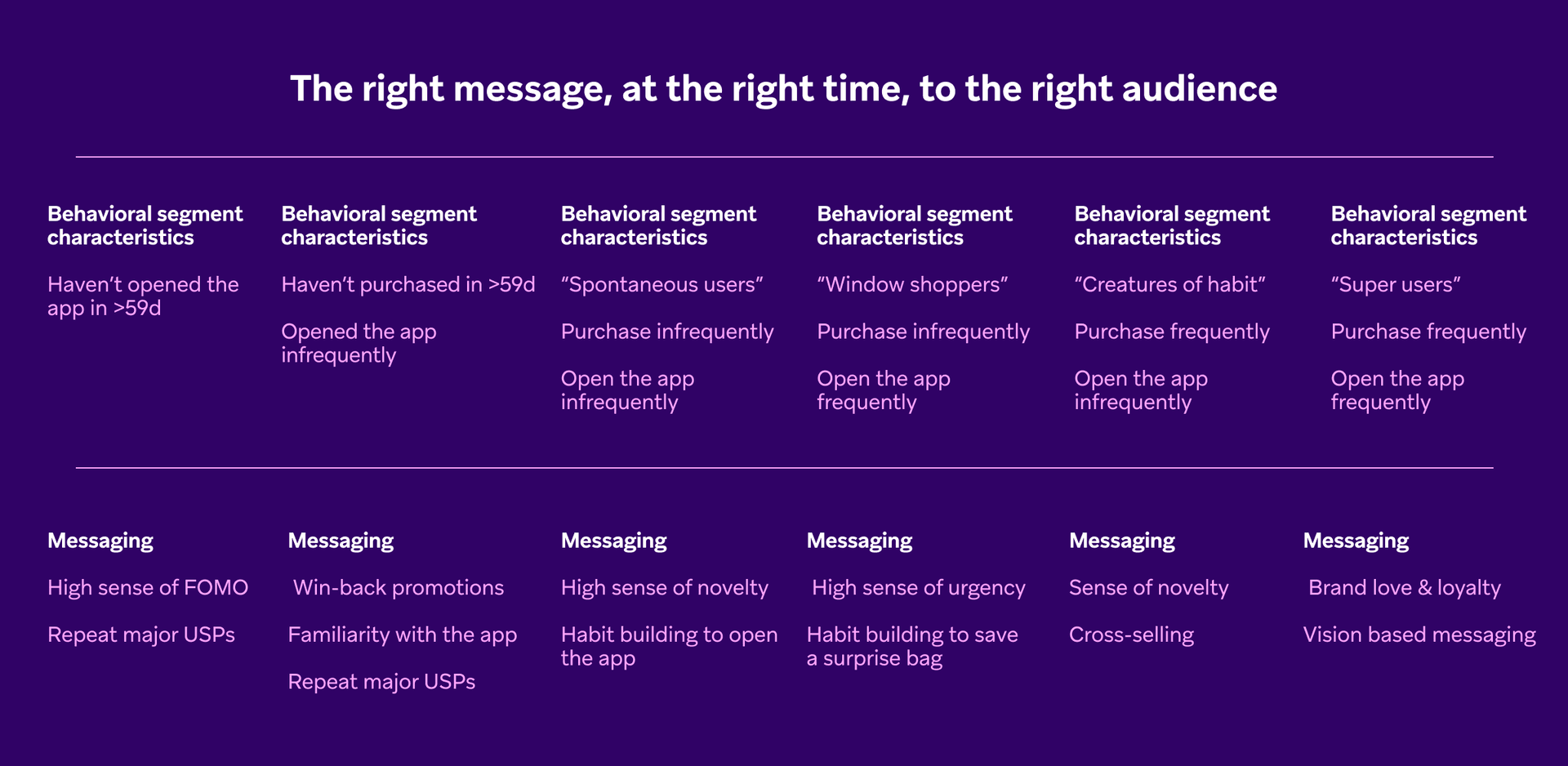
Next, they created API-triggered campaigns to alert users when new, relevant Bags were available. They use supply-based logic to trigger campaigns when a retailer lists Surprise Bags, which are then sent to users who are likely to be interested in the items based on their user profile information.
Then, they identified actionable segments to provide more personalized messaging at scale. While the API call was limited to users who have taken certain actions, the actionable segments enabled the Too Good To Go team to highlight Surprise Bags via push notifications that users are likely to purchase on a 1:1 basis and to ensure that the message struck the right tone, allowing them to boost engagement with this key outreach. It also allowed the company to prioritize specific user segments in connection with supply fluctuation in the moment, supporting better, more actionable recommendations.
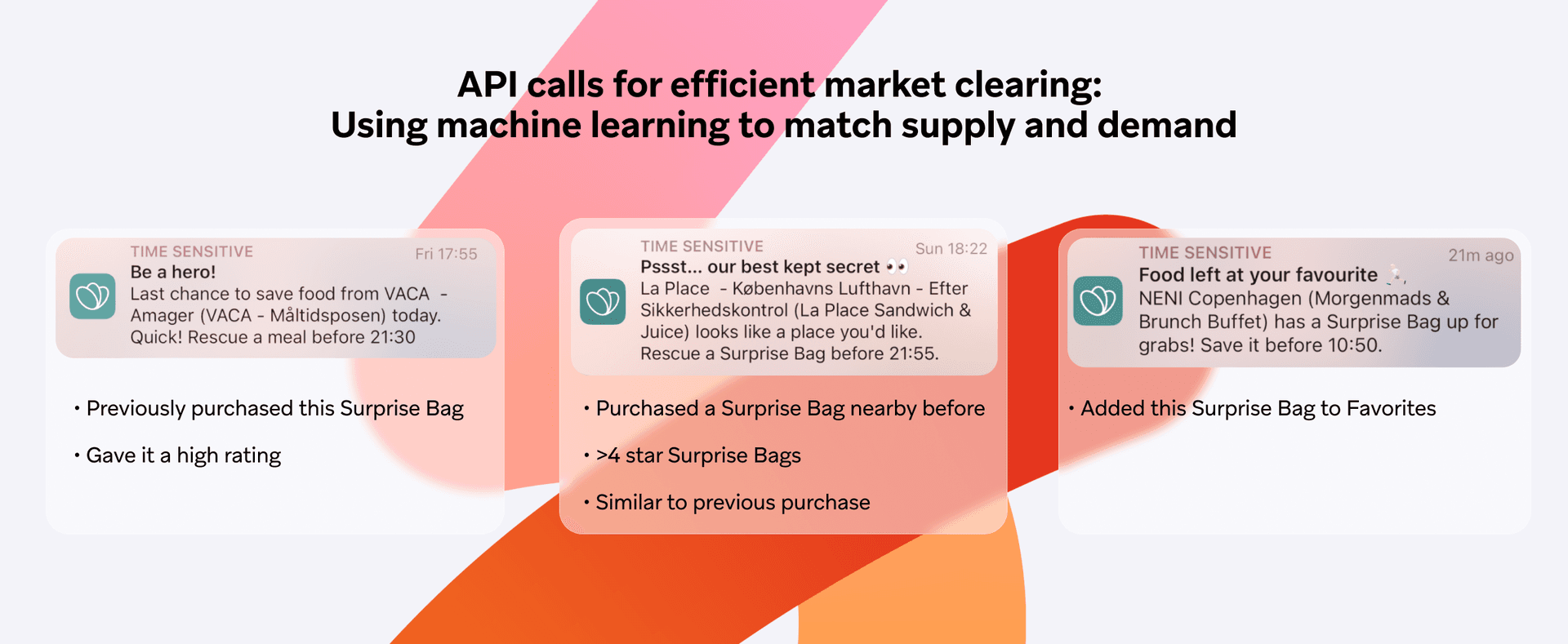
Additionally, they used Braze Content Blocks to create campaigns that help address user drop off and prevent churn. When a user’s engagement score drops, it triggers a message personalized with Braze Connected Content, which dynamically pulls in new Surprise Bags within the customers’ geographic area.
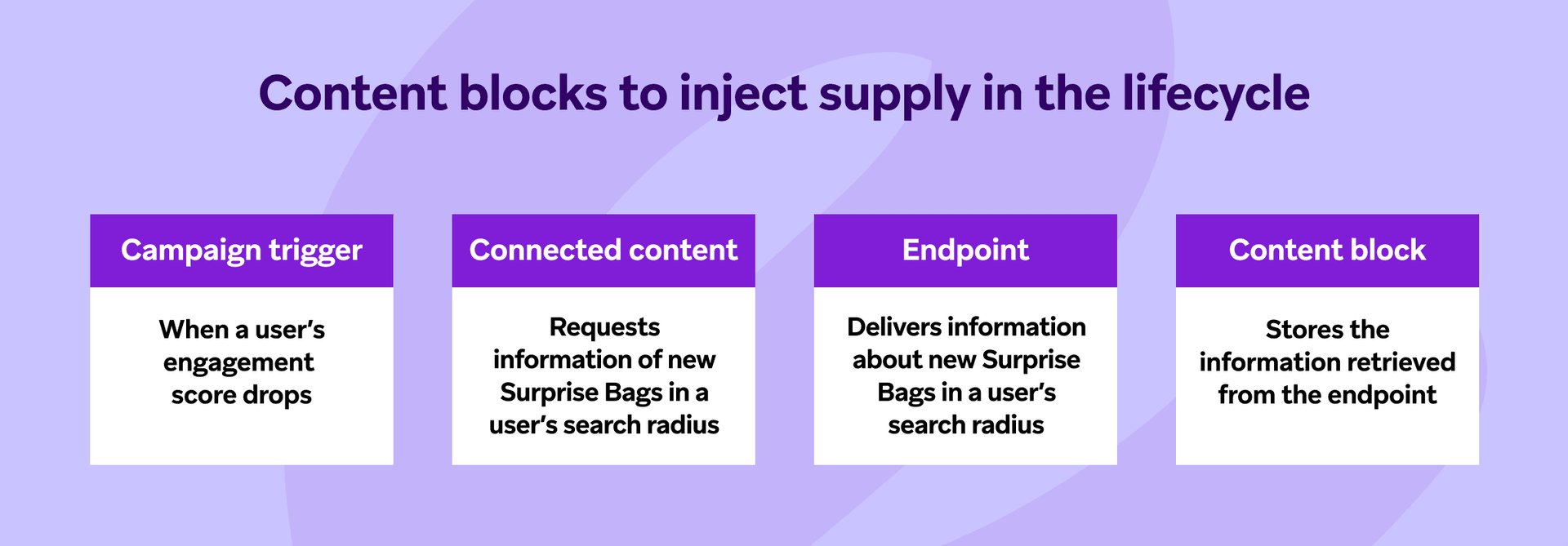
They also created several brand-building campaigns based on different themes. For example, they’ll choose a theme such as dessert and personalize messages based on their catalog of items with Braze Catalogs that matches the theme, Bag availability, and customer’s location. Catalogs is a tool that allows you to harness your brand's own catalog of data related to the goods, products, or services your company offers to personalize your customer experiences and campaigns.
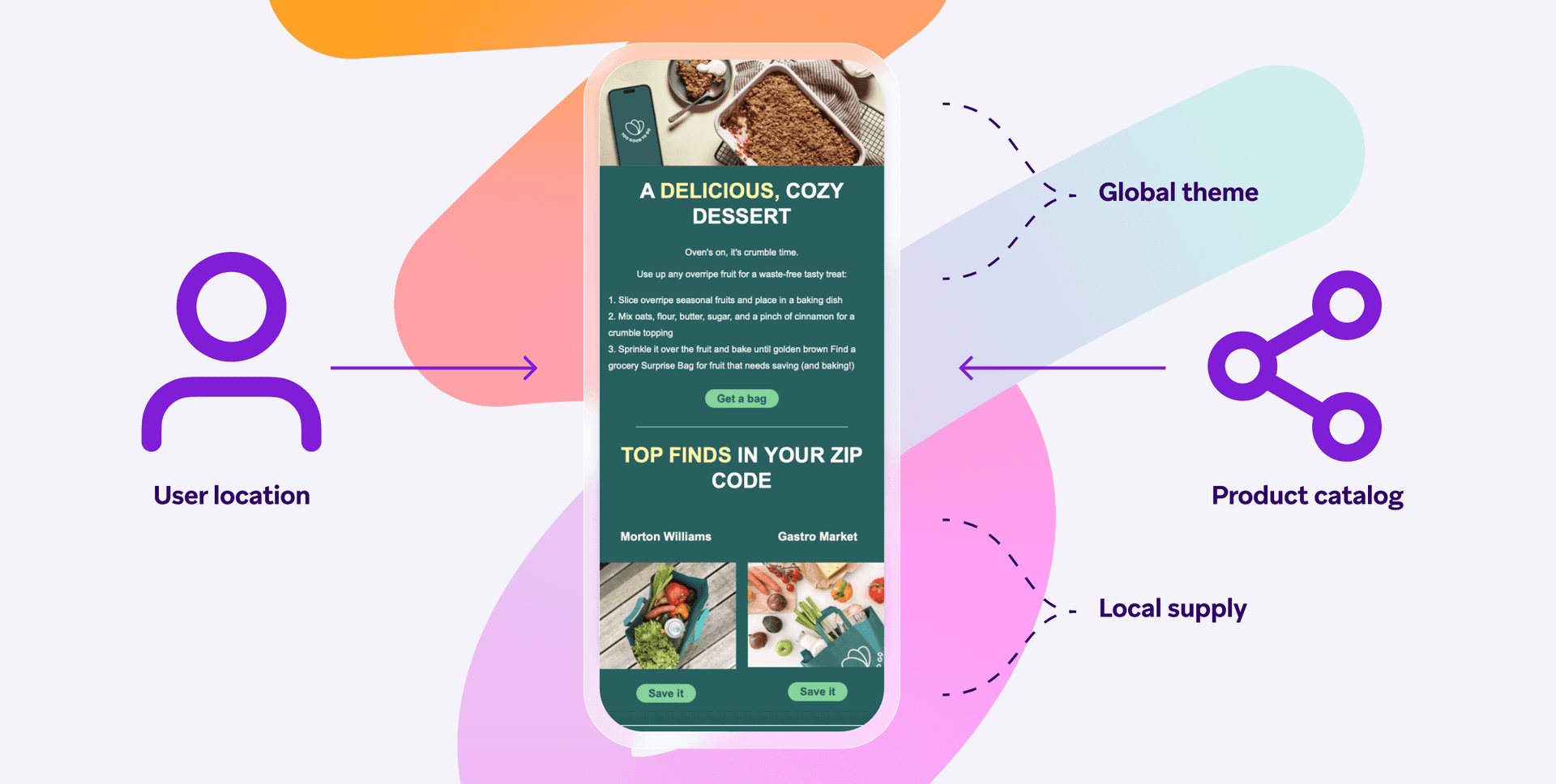
Too Good To Go seamlessly integrates user and supply data to personalize interactions to each user throughout the user lifecycle. This strategy keeps users engaged and optimizes the entire process from surplus food notification to purchase.
“With Braze, we’ve been able to improve the effectiveness of our messaging while reducing costs associated with our CRM campaigns.”
Jesper Henriksen
Product Manager, Too Good to GoToo Good To Go’s Success: Higher ROI
The use of behavioral and supply data to create actionable segments and more relevant messaging has greatly increased the effectiveness of Too Good To Go’s efforts. They’ve seen a 135% increase in purchases attributed to CRM and a 2X increase in conversion rate for messages. With help from their data engineering team, they were able to sync behavioral segments to Braze as user attributes in a couple of weeks—once established, the sync runs by itself.
Key Takeaways
- Personalization drives user retention: Customizing interactions based on user behaviors and preferences significantly enhances user engagement and reduces churn. By targeting users with relevant surplus food alerts, Too Good To Go ensures that every communication adds value to the user experience.
- Data integration enhances efficiency: Effective use of user data allows Too Good To Go to improve operational efficiency and ensures that users receive the most relevant offers, increasing the likelihood of purchase.
Want to learn about strategies for effective customer activation? Download Acquisition in Action: Attracting New Customers and Keeping Them Engaged.
Check out more Case Studies
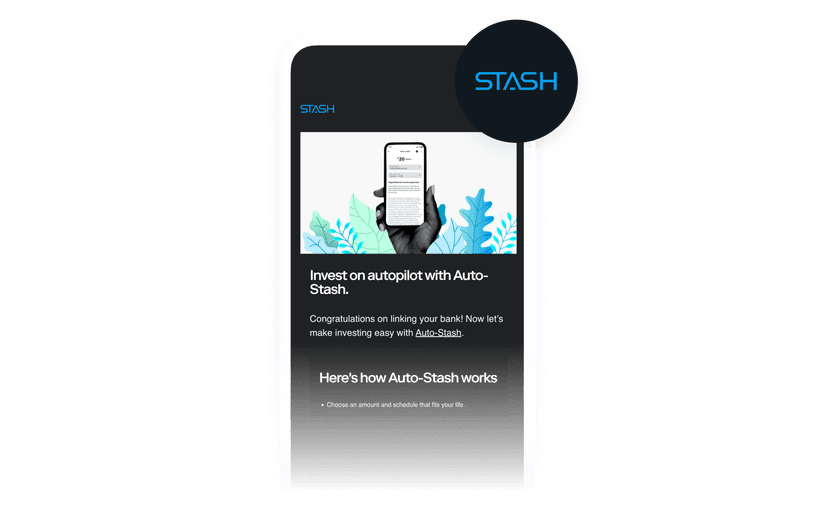 Case Study5 min read
Case Study5 min readStash drives long-term investing habits with sophisticated, personalized user onboarding
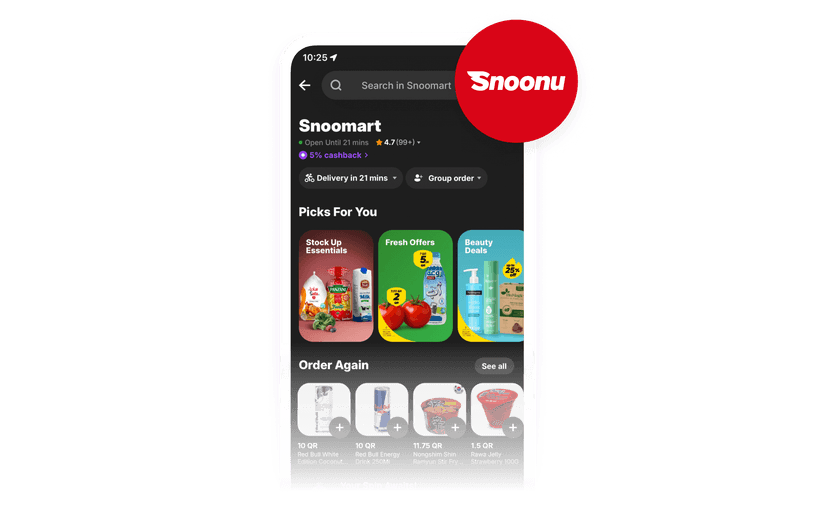 Case Study3 min read
Case Study3 min readSnoonu drives customer loyalty and repeat orders through a gamified shopping experience
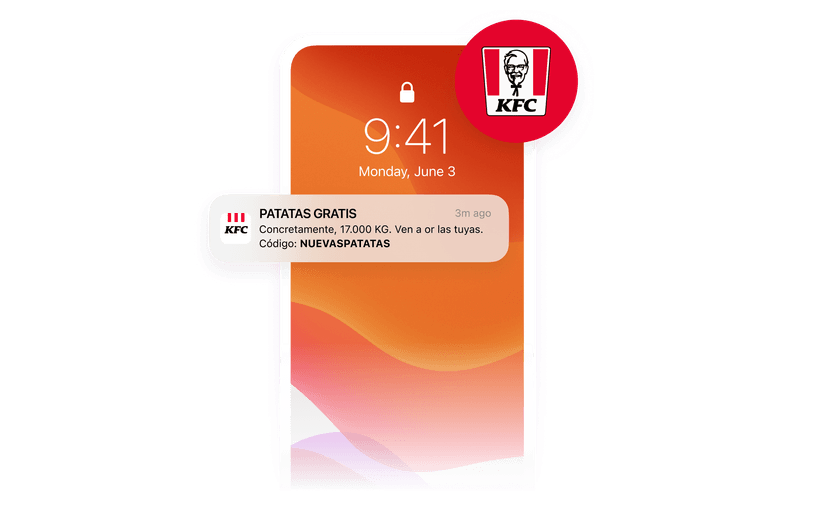 Case Study4 min read
Case Study4 min readKFC Spain's bold customer engagement strategy turned critics into fans